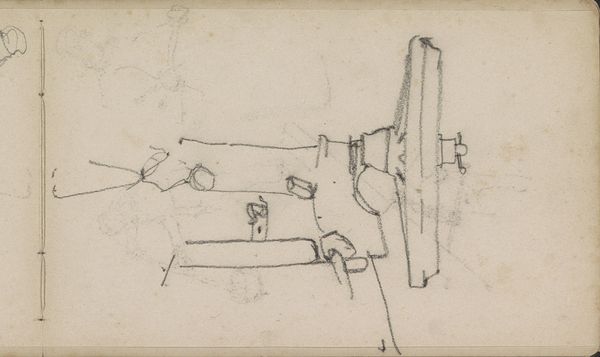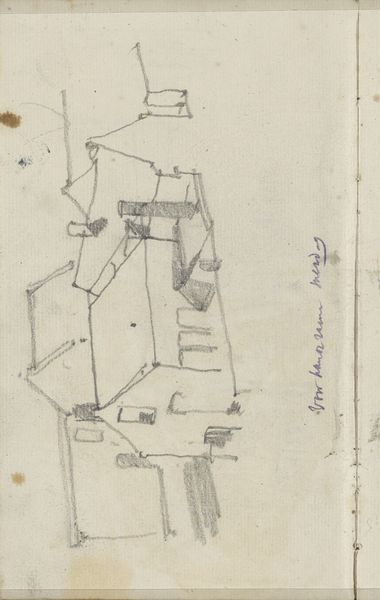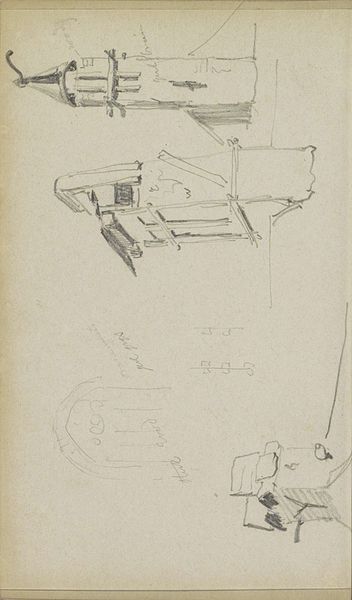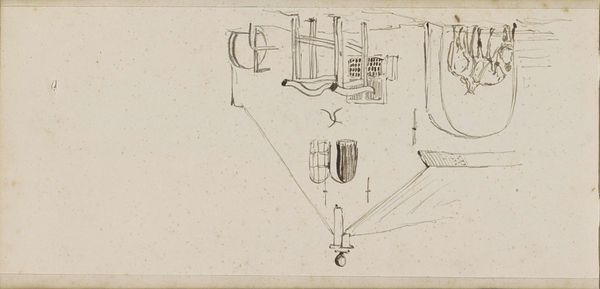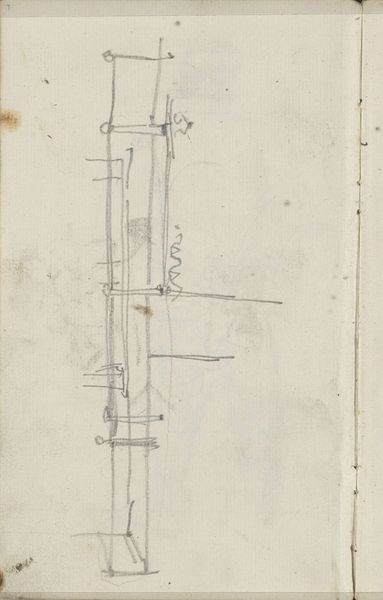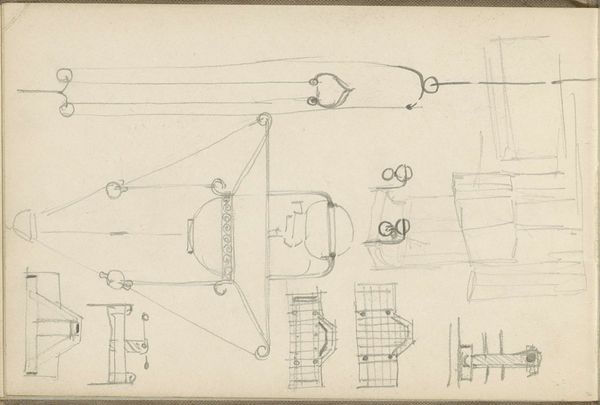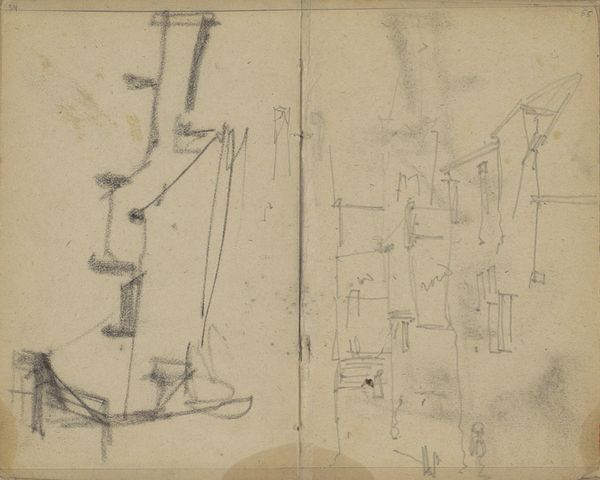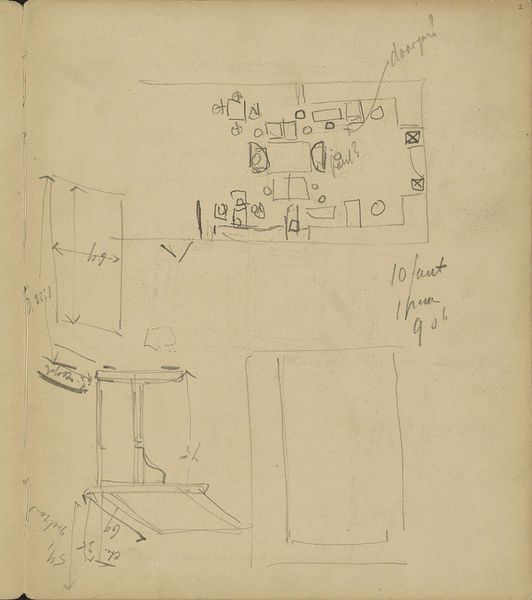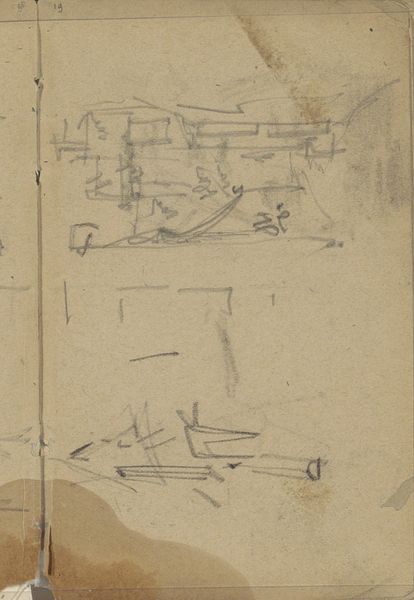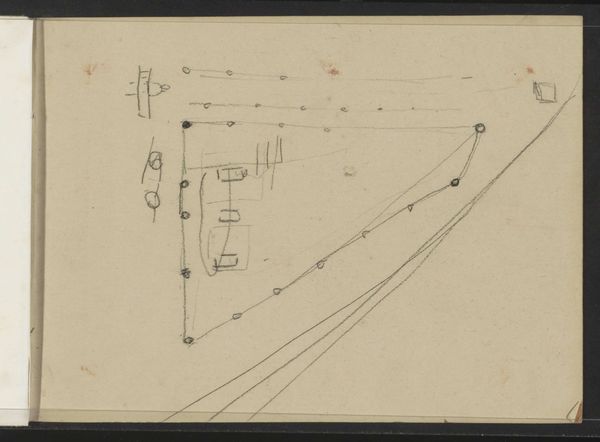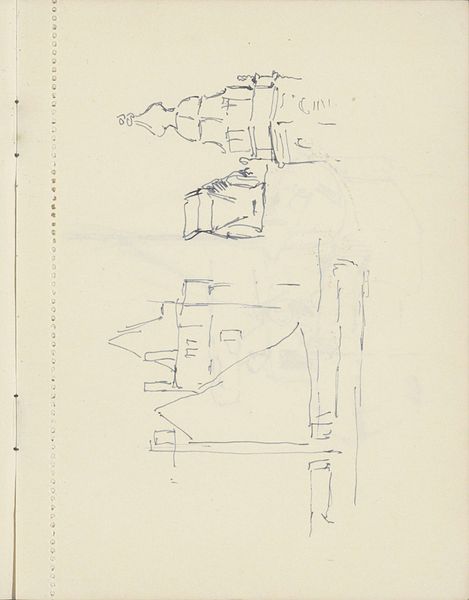
drawing, pencil, architecture
#
drawing
#
dutch-golden-age
#
pencil
#
cityscape
#
architecture
#
realism
#
building
Dimensions: height 130 mm, width 159 mm
Copyright: Rijks Museum: Open Domain
Editor: So, this drawing, "Twee topgevels, waaronder een klokgevel"—"Two Gable Fronts, including a Bell Gable"—was created by George Hendrik Breitner sometime between 1886 and 1923. It's a pencil drawing. It strikes me as unfinished, like a fleeting glimpse of something, but very precisely unfinished. What catches your eye in this piece? Curator: Oh, unfinished symphonies of urban observation, I adore them. For me, it's about the suggestion. Breitner’s sketches always whisper secrets about a world caught on the fly. He wasn't about pristine replication; it was about capturing the feeling of the city breathing, brick by brick, curve by curve. Does it make you feel as if you are standing on the shoulder of Breitner as he records life in Amsterdam? Editor: Absolutely, I can imagine him pausing to quickly jot down this image. It's interesting how minimal the drawing is. How do you think his style here connects with broader artistic movements of the time? Curator: Well, think about the Realists. Courbet, say. Stripping away the romantic ideal to get at the grit of everyday life. Breitner, though rooted in that, almost veers into Impressionism with these ephemeral strokes. He’s giving you the impression of gables, not necessarily the precise gables themselves. See how he uses just a few lines to imply such solidity? Editor: That makes sense. I can see both Realism and Impressionism at play here. It's more about feeling than photographic accuracy. Curator: Exactly. It’s like a haiku etched in pencil, distilling the essence of Amsterdam’s architecture. What's more impressive is his skill at creating a feeling for this particular city with what essentially amount to notations! Food for thought. Editor: Yes, definitely, I hadn't quite considered it that way before. Now I can see the drawing holds more significance than initially assumed.
Comments
No comments
Be the first to comment and join the conversation on the ultimate creative platform.
